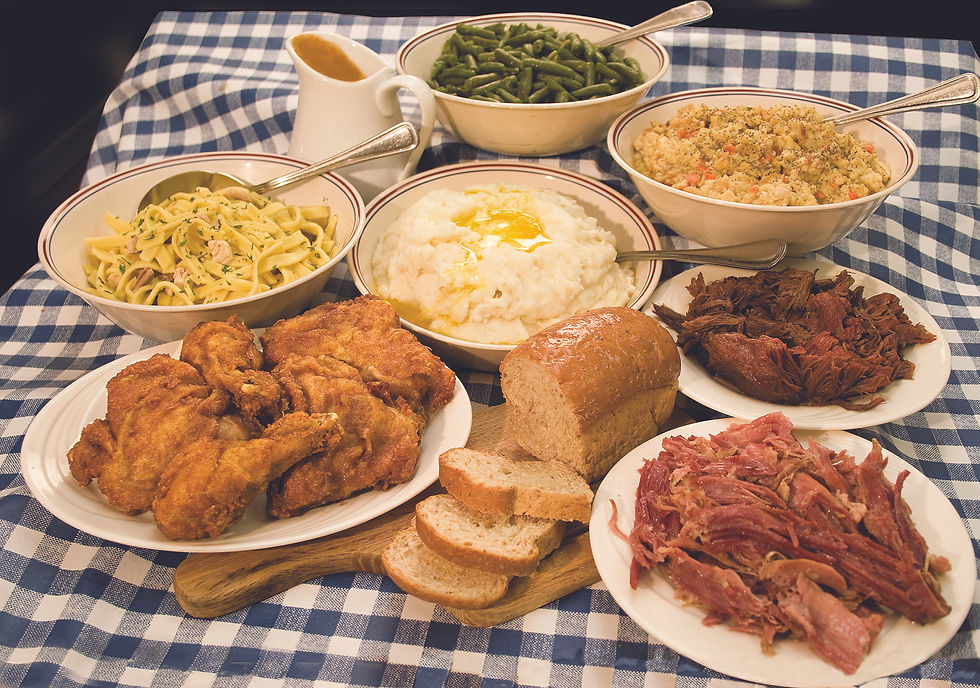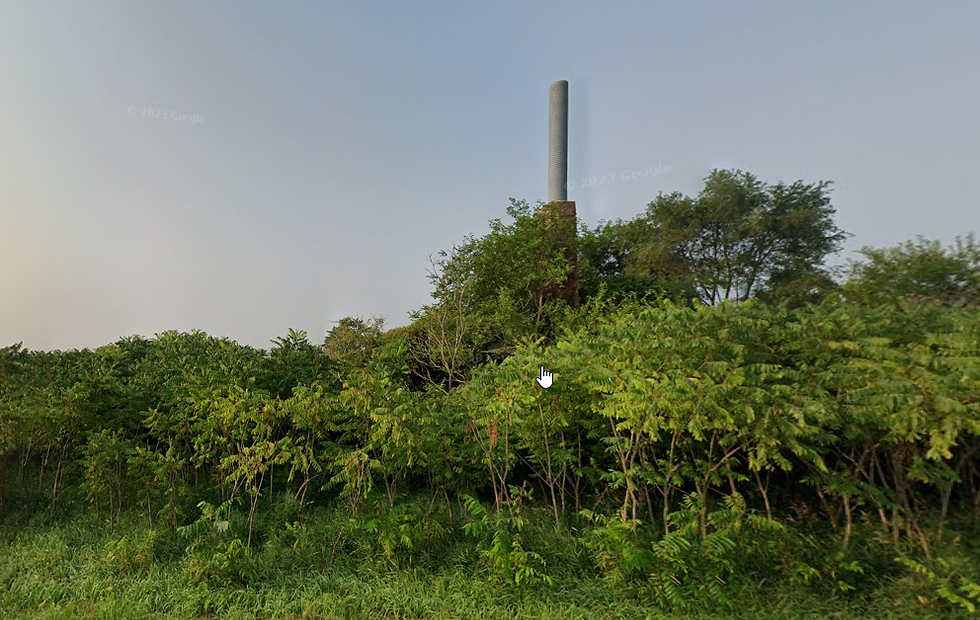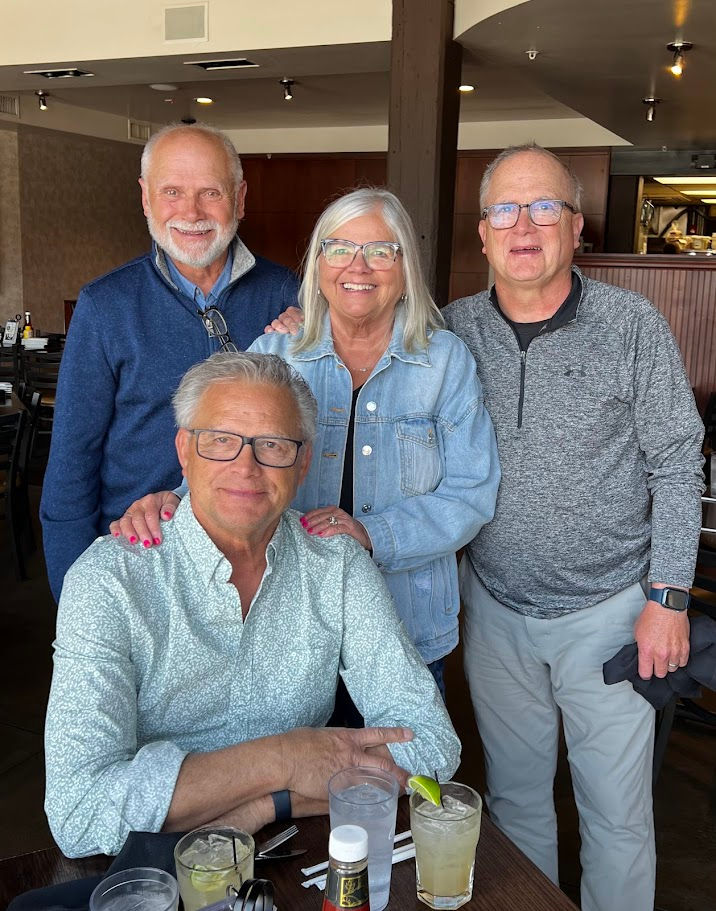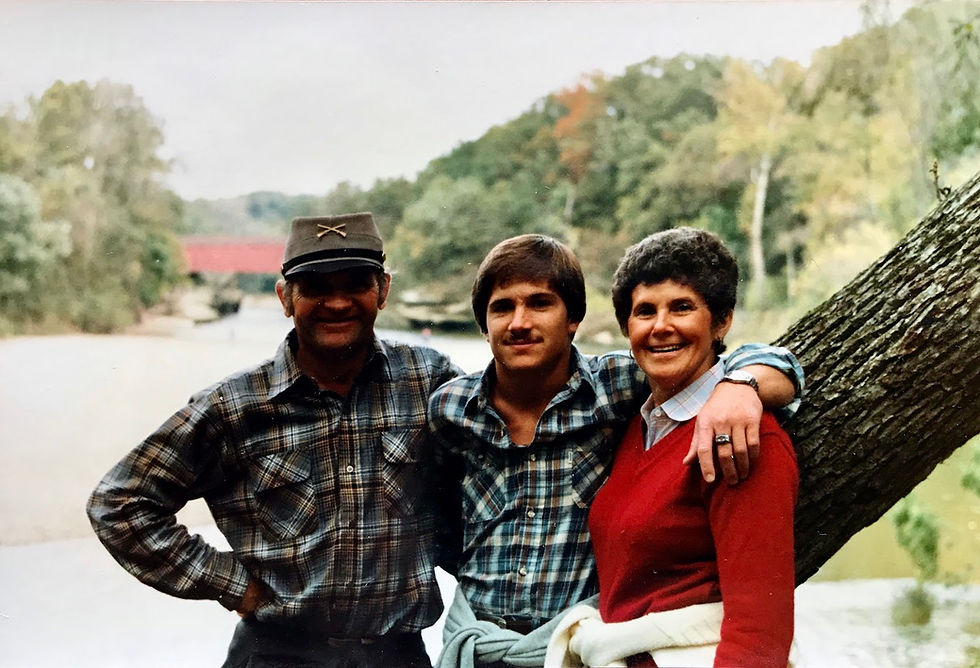The Summer of Mint and Mayhem: A Sheets Family Story
- Tim Sheets
- Jul 5
- 4 min read
Updated: Jul 6
Back in the early 1970s, when bell bottoms were bold and mint oil prices were bolder, Dad decided to stake our claim in the green gold rush. Spearmint, as it turned out, thrived in the black muck soil we had on much of the farm—soil so rich it could sprout a fence post if you weren’t paying attention.
Our Amish neighbor, Earl Yoder, owned a mint still and was game to partner up. So that spring, the whole Sheets clan—kids, cousins, and any unsuspecting neighbor within earshot—were recruited to plant mint. Picture this: a planter with a rotating wheel, dusty fields, and rows that never seemed to end. We’d sit and feed tiny plants into the machine like minty little sacrifices to the earth. It was hot, dusty, and so tedious that Sister Tammy solemnly vowed to never become a farmer. (She kept her vow. She also still glares when anyone offers her spearmint gum.)

By day’s end, we weren’t so much tan as we were caked in black dirt. You could barely tell us apart—just dusty outlines of exhausted kids, blinking through grime like coal miners who smelled oddly like fresh dirt.
Come late June or early July, it was harvest time. The mint was cut, raked, and baled into what felt like heavy green anvils. Brother Todd and I rode the hay wagon, stacking bales while trying not to suffocate under the weight—or the smell. Then came the one-mile pilgrimage to the still, where the real magic (and mild suffering) began.
At the still, we’d unload the bales, cut the twine, and toss the mint into giant tubs—about ten feet wide and eight feet deep. Then came the stomping. Yes, the stomping. We smashed that mint down like grape-stompers in an Italian village, except instead of wine, we were brewing spearmint punishment. Once packed tight, the tubs were sealed with heavy lids and the steam distilling process began.
The scent was heavenly. The process? Not so much. Steam from a coal-fired boiler was forced through the mint, releasing oil that was then condensed, separated, and skimmed into containers by Earl with the care of a man handling liquid gold. He would fill up 55 gallon barrels with this liquid gold worth about $17,000 in today's money. I collected a tiny bottle as a souvenir and and still have it—sweet, pungent, and forever linked to sweat and steam.
Now, if you’re thinking this sounds charming, let me introduce you to the part no one fought to volunteer for: removing the “plummies.” That’s what we called the spent, steamed, mint mush that remained in the tubs. After the lids were cracked open and we were blasted with face-melting humidity, we’d wrestle giant hay forks into the tubs, stomp them into the plummies, and haul them out with a winch system. Repeat. And repeat again.

It felt like we were working inside a Crock-Pot set on judgment day. I’d guess the temperature was at least 125 degrees with humidity near 1000%. We wore gloves and thick-soled boots to avoid scalds. By the time we reached the bottom of the tub, we were praying for deliverance—or at least for a breeze.
Oddly enough, stepping out into the 90-degree Indiana summer felt downright refreshing. We’d gulp down cold well water, pour water over our heads and arms, and then do it all again. OSHA would’ve had a field day, and child welfare probably would've called a meeting. But for us? It was just a Sheets summer.
The daily saving grace came at noon when Earl’s wife laid out an Amish feast—roasts, potatoes, homemade bread, and pies that could bring a boy to tears. We’d eat like we hadn’t been fed in days, which, judging by our energy levels, felt accurate.

We did this for a few summers until mint oil prices fell and Dad hung up his minting dreams. I can’t say I was heartbroken. But looking back, I’m thankful. Those long, sweaty days in the field and the still taught us the kind of work ethic you don’t forget. The kind that smells like spearmint, burns like steam, and tastes like the best homemade pie you’ve ever eaten.
And so, as with many great Sheets family traditions, it involved dirt, danger, mild trauma, and food. And we wouldn't trade it for the world—except maybe for air conditioning!

Here's a video of a more modern process of harvesting mint oil. Notice that the modern tubs are on wheels and are filled in the field with a chopper and chute. We had to bale the mint, load the wagons and then fill the permanent tubs at the distillery. We also had to manually remove the spent mint plants by using the hay forks at the end of the process. The modern way in the video makes it looks easy!


Comments